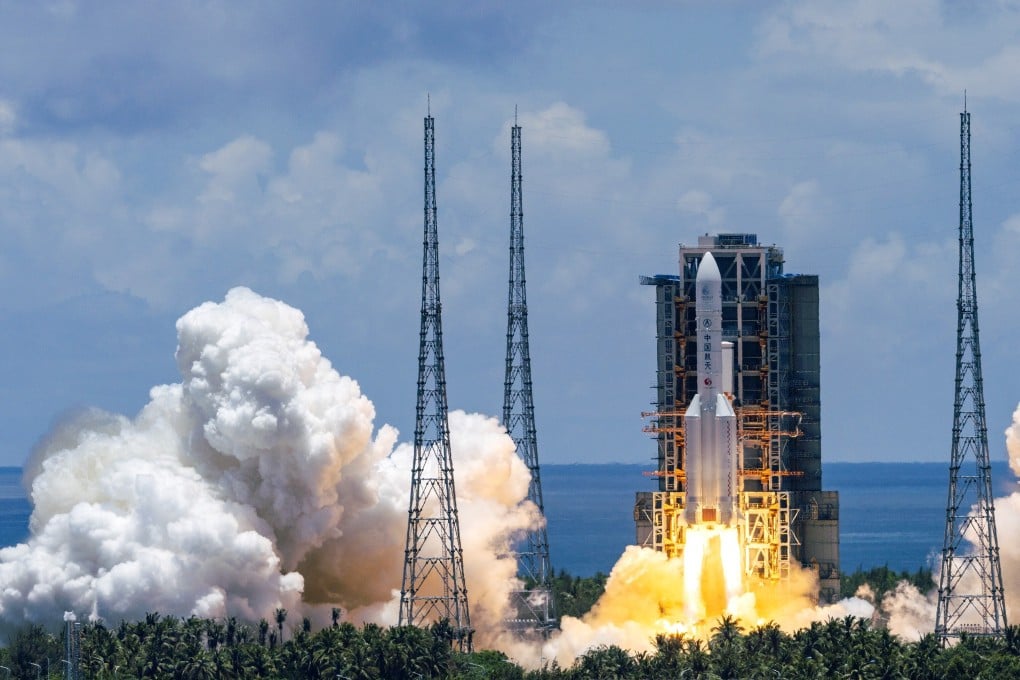Advertisement
China launches its first independent mission to Mars
- If successful, the Tianwen-1 is expected to explore the red planet for over three months
- Nine years ago, the country launched a probe in collaboration with Russia that got stranded in orbit
Reading Time:3 minutes
Why you can trust SCMP

China launched its first independent probe headed to Mars at 12.41pm on Thursday, a major milestone in Beijing’s mission to build a world-class space programme.
According to Chinese media, the probe, named Tianwen-1, was launched via a Long March-5 rocket from Hainan Island and is expected to reach Mars’ gravitational field in February 2021.
The 5-tonne probe was successfully sent into a predetermined orbit and started its Mars exploration mission after the carrier rocket flew for more than 36 minutes, according to state news agency Xinhua.
Advertisement
Upon a successful landing, the probe is expected to work for at least 90 Mars days, which is longer than three months on Earth. Bao Weimin, an academic with the Chinese Academy of Sciences, told Xinhua in June that the landing would be the most difficult part of the mission, involving a four-step process taking seven to eight minutes.

01:48
China launches mission to Mars with lift-off of home-grown Tianwen-1 spacecraft
China launches mission to Mars with lift-off of home-grown Tianwen-1 spacecraft
China’s Mars probe consists of an orbiter, a lander and a rover. The lander and rover will make a soft landing on the surface, and afterwards, the rover is expected to study the planet’s surface, atmosphere, ionosphere and magnetic field.
Advertisement
Advertisement
Select Voice
Choose your listening speed
Get through articles 2x faster
1.25x
250 WPM
Slow
Average
Fast
1.25x